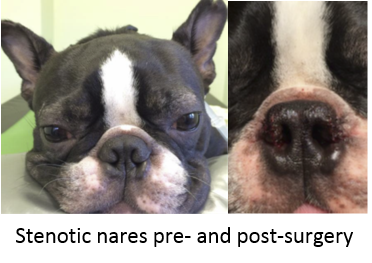Developments in Sweden in the fall of 2015 serve to highlight the challenges of addressing health and welfare in 'flat-faced dogs', i.e. The Brachycephalic Issue. We follow them here, chronologically as they serve to exemplify the problems and, hopefully, to inform others working in this area.

Recently, veterinarians in Sweden sent an open letter to the Swedish Kennel Club (SKK) Swedish Board of Agriculture (link to original; English translation 'Open Letter ...' below). The letter proposes collaboration between the Swedish Kennel Club (SKK), veterinarians and regulators to address issues in brachycephalic breeds ('trubbnosar' in Swedish (snub-nosed)). While acknowledging the long time activities of the SKK to promote healthier breeding of these dogs, the veterinarians suggest six proposals for action.
(attachment: Open Letter to the SKK and the Swedish Department of Agriculture _without signatures.pdf )
In subsequent responses the SKK welcomes increased collaboration with veterinarians*(link to original; English translation 'The SKK Welcomes ...' below) and outlines progress and proposals from meetings with the veterinarians and other stakeholders*(link to original; English translation 'Common Cause ...' below).
(attachments: The SKK Welcomes Increased Cooperation with Veterinarians_English.pdf and
Common Cause to Reduce Respiratory Problems_English.pdf
In response to the veterinarians' letter, owners and breeders of 'snub-nosed' dogs were invited to sign an online petition entitled : "We Care About the Whole Dog" (link to original, English translation 'Petition We Care...' below). The text expresses commitment to health and welfare of these dogs, an acknowledgement of health issues, but also a call for evidence rather than accusations. This petition was signed by 1047 people. (attachment: Petition_We_Care_About_the_Whole_Dog.pdf )
The SKK, on 23 October 2015, published another press release addressing new and ongoing aspects of the issue. It is clear that this is an emotional issue, that discussions on social media are sometimes provoking personal attacks and the SKK is calling for a measured and evidence-based approach. (attachment:
SKK Press Release regarding the Brachycephalic Issue_23 Oct 2015.docx )
These developments highlight the complexities of the bigger Brachycephalic Issue and the expression of passionate opinions on both sides. Here at DogWellNet.com, and with our IPFD partners, we will continue to follow this issue. We will also assist in efforts to create a collaborative, international approach to this global and complex issue. See other articles in this category.
 Donate
Donate

Recommended Comments
Join the conversation
You can post now and register later. If you have an account, sign in now to post with your account.
Note: Your post will require moderator approval before it will be visible.